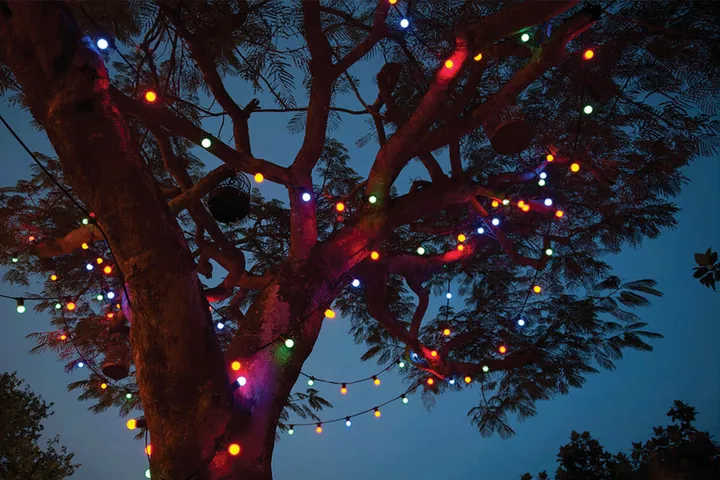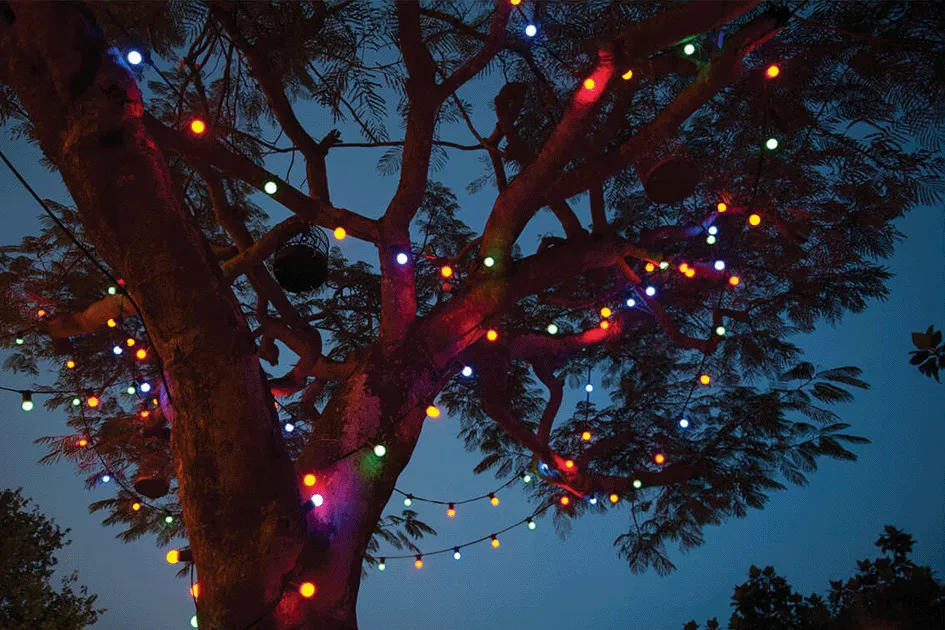About 15 years ago I had a startling thought that transformed the way I pray and read Scripture. It happened at the end of a church league softball game, during the post-game prayer moment thanking God that nobody got hurt, everyone had fun, and we trounced the other team in charity and humility. Only when the guy leading the prayers said, “Close your eyes and bow your heads for prayer” did I notice all around me the beauty of creation—beautiful red flowers, majestic oak trees, the chirping of songbirds, the smell of freshly mown grass. For two hours we had played softball immersed in God’s good creation but unaware of it. So now I had to keep my eyes wide open.

Illustration by Adam Cruft
Then it hit me: At certain times and places, maybe God wants us to pray with our eyes and ears and noses open to the wonder of His creation. After all, He declared His creation “very good” (Gen. 1:31), so perhaps attentiveness is also a very good way to read, study, and enter into the reality of the Bible.
Have you ever wondered, for instance, how much of the action and storyline of the Bible occurs outside—not in a building but wide open to God’s sky, trees, rivers, birds, and stars? The Kentucky farmer and writer Wendell Berry claims that the Bible is mostly a “hypaethral book”—that is, without a roof, or open to the sky. Berry concludes, “[The Bible] is best read and understood outdoors.”
Many of the “big events” in Scripture occur without a roof. For starters, God’s creation of the world happened outside (since “inside” didn’t exist before creation). The call of Abraham occurred outside: “And [the Lord] took him outside.” (See Gen. 15:5.) So did the exodus and journey to the Promised Land; many of the psalms (especially 8, 19, 24, 46, 65, 96, 104, and 146-150); the crucifixion, resurrection, and ascension of Jesus; the missionary journeys of the apostle Paul; and the visions depicted in Revelation.
Of course, the Lord spent plenty of time indoors, but look at this quick summary of His outdoor activity in the early chapters of Mark’s gospel:
Jesus was baptized in the Jordan River, and the heavens tore open (Mark 1:9-10).
Jesus endured temptation in the wilderness, where “He was with the wild animals” (Mark 1:12-13).
Jesus walked beside the Sea of Galilee (Mark 1:16 NIV).
Jesus went to a desolate place (Mark 1:35).
Jesus “went out again by the seashore” (Mark 2:13).
Jesus walked through the grainfields with His disciples (Mark 2:23).
Jesus withdrew again to the sea (Mark 3:7).
Jesus prayed up on the mountain (Mark 3:13).
The Lord frequently used illustrations about earthy, outdoorsy things—a farmer flinging seeds, birds nesting in the branches of a mustard tree, a wicked storm destroying a house.
Berry is on to something here. “Passages that within walls seem improbable or incredible,” he writes, “outdoors seem merely natural. This is because outdoors we are confronted everywhere with wonders; we see that the miraculous is not extraordinary but the common mode of existence. It is our daily bread.”
Don’t get me wrong. I love being inside too. My church currently worships in a refurbished plastics manufacturing building, and week after week I meet God in that place. The corporate worship, the rich words of the liturgy, the preaching of God’s Word, the weekly Lord’s Supper, the hugs and smiles and handshakes, the chance to welcome new people—I can’t get that by myself “out in nature.” Besides, it would be tough worshipping out-of-doors near Chicago in January!
But still, there’s something special about reading Scripture and praying outside. So here are a few simple ways to incorporate some outdoor experiences into your devotional times.
Find a local park or nature preserve. My suburban county boasts “23,000 acres of woodlands, wetlands and prairies”—and people rarely use it. Or find a smaller park near you. Even crowded cities usually have a few basic, quiet parks or benches.
To delight in God’s creation, grab what Anthony Bloom calls “crumbs of wasted time”—a sunset, a full moon, a few stars, a bird singing in a tree, leaves shimmering in the sun. Pause, breathe deeply, and give thanks to God for beauty and His goodness.
Make an outdoor haven at home. I live in a lower income neighborhood, so I had to think creatively about my yard. I bought a used patio table, a chunk of Astroturf to cover my warped concrete slab, and an outdoor chair. Weather permitting, I grab my cup of coffee and pray outdoors in this new, more calming backyard ambience.
If the first three items on this list won’t work, at least bring some of God’s creation inside. Buy some nice plants or cut flowers. Open the windows and let the fresh breeze in.
You don’t need to visit the Swiss Alps. Ordinary places will do. To expand on Wendell Berry’s thoughts, “Outdoors we are confronted everywhere with wonders” from God’s good and gracious hand.





